The tense rhythm of life in the modern world, upheavals and unpleasant news, and economic and social unrest negatively affect health, leading to physical and mental illnesses. That is why it is so important to take care of yourself and your loved ones - follow a daily routine, avoid stress, rest more, and eat right. But what if there is no such possibility? Special means that keep the body in good shape will come to the rescue. Our article tells you about such succinic acid! If you want to view amber products immediately on yantar.ua or ask all questions to our managers.
All about succinic acid - composition, origin, mechanism of action
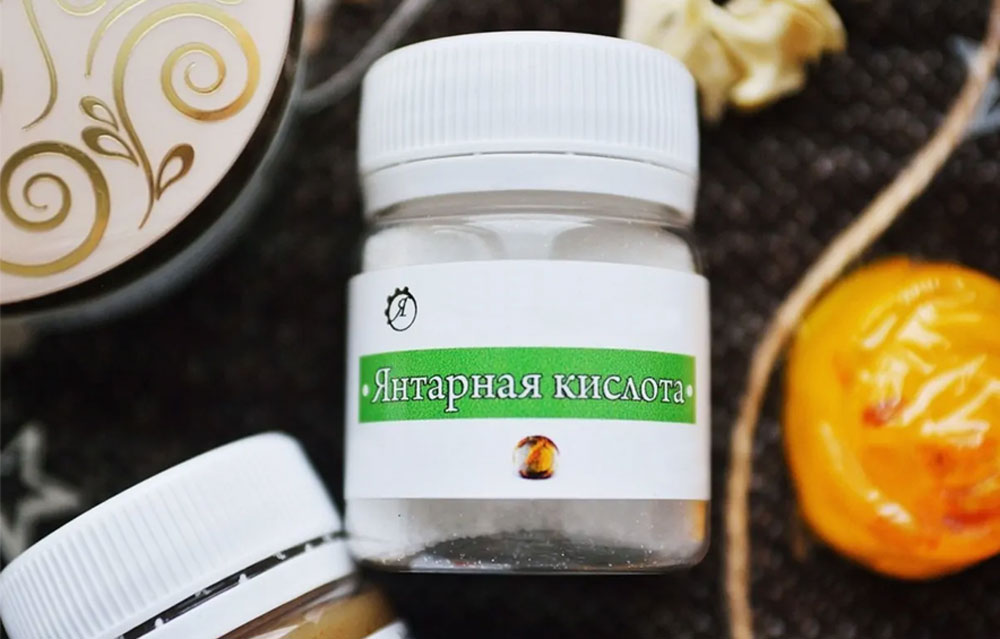
This substance, scientifically known as "butanedioic" or "ethane-1,2-dicarboxylic" acid, is one of the oldest biologically active additives. As a chemical compound, it was identified as early as the 17th century. The substance, obtained by the German doctor I. K. Barkhausen (1666-1723) as a result of the distillation of Baltic sunstones, looked like tiny colorless crystals that dissolved well in water and alcohol. They tasted sour-salty and slightly bitter.
Much later, scientists established what the drug consists of - it is a dibasic (contains 2 carboxyl groups of COOH) marginal (saturated, that is, the hydrocarbon radical in it has captured all available hydrogen atoms) carboxylic acid, whose formula is written as C4H6O4 or ООС-СН2-СН2- UNO It melts at a temperature of 183̊С, and if you continue to heat the solution, then at 236̊С it will turn into an anhydride - a compound of oxygen and negatively charged ions.
Previously, succinic acid was extracted only from hardened resin - it is believed that it was formed in gems when they came into contact with air and water. To emphasize that such a substance and its derivatives are made from natural components, they were called succinates (from the Latin word "succinum" - "amber"). However, even in the richest cabochons with a healing drug, its amount does not exceed 4-5% of the total weight - which means that to get 1 kg of medicine, you need more than 20 kg of gems!
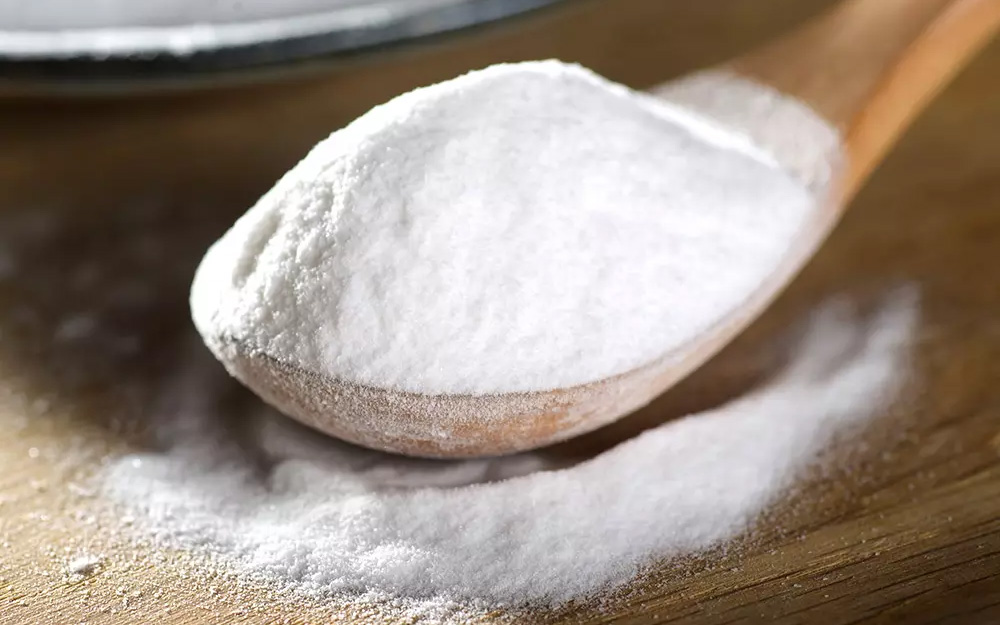
Therefore, on an industrial scale, succinic acid is made from maleic anhydride: it is dissolved in distilled water, and then immersed in a mixture of stainless steel cathodes and pulses of periodic current are passed through it. And due to the fact that alfalfa, motherwort, sugar beet, hawthorn, grapes, green gooseberry and barley contain microscopic doses of the useful substance, not so long ago researchers created another method of synthesis - on a bio basis. The necessary drug is produced by ... genetically modified bacteria Escherichia coli or yeast fungi Saccharomyces cerevisiae, placed in plant mass!
However, this chemical compound is found not only in plants. It is used in every living organism, activating mitochondria and participating in the Krebs cycle (fermentation of fatty acids and glucose, as a result of which the body is saturated with energy). With the participation of succinates, metabolism becomes much more intense - saccharides, proteins and fats literally "burn", accelerating metabolism.
In addition, the drug has a positive effect on the production of ATP (adenosine triphosphoric acid - a universal power source for biochemical reactions) and on the transfer of electrons between cells. And it also improves tissue respiration - the breakdown of carbohydrates, lipids and amino acids into carbon dioxide and water.
When should you use succinic acid?
Indications for the use of this biologically active supplement are very diverse. It is used by:
- as an antioxidant to eliminate free radicals (particles with unpaired electrons that destroy the atomic structure of cells and accelerate aging);
- as a means for the prevention and relief of oncological diseases - succinates normalize the acid-alkaline balance of the blood and its gas composition, thereby stopping the growth of tumors, and also minimize the negative effects of chemotherapy;
- as an antibiotic - due to the acid-caustic nature of the drug, it destroys dangerous bacteria and microbes;
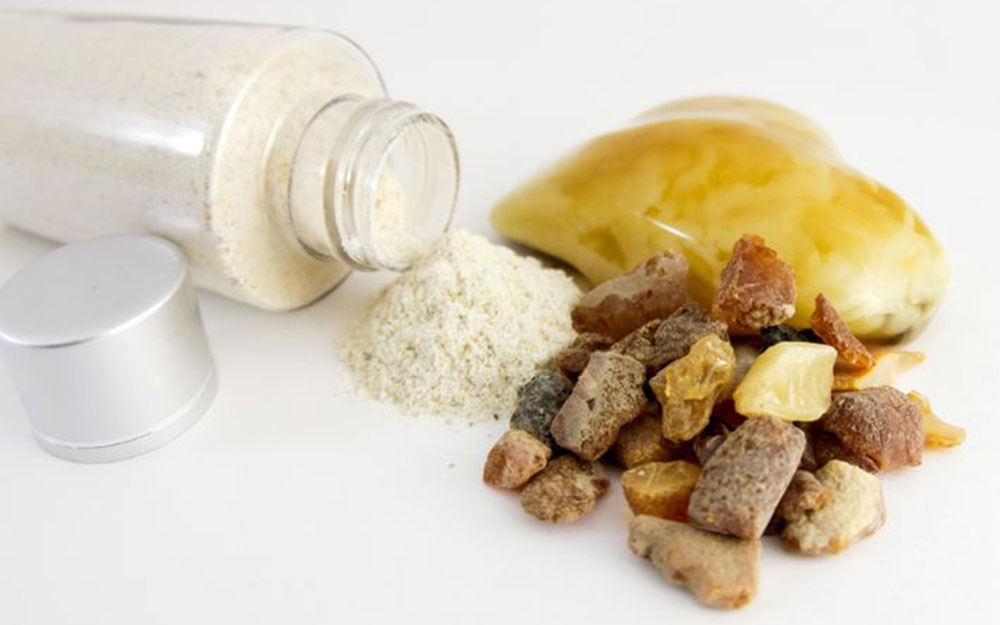
- as an antitoxin and hepatoprotector - the tool is often taken to remove the side effects of other drugs, and succinic acid also helps with a hangover or food poisoning;
- as a cytoprotector (to protect the brain, heart, kidneys and other organs from lack of oxygen caused by illnesses or injuries);
- as an immunomodulator that increases resistance to seasonal flu and SARS epidemics, causes expectoration and clears the respiratory tract;
- for the treatment of diseases of the heart and blood vessels, anemia, the consequences of a heart attack;
- to prevent disorders of cerebral blood circulation, age-related and sclerotic changes in brain tissue;
- for the prevention of thyroid dysfunction, type 2 diabetes (succinate significantly lowers blood sugar), hypo- and hyperthyroidism;
- succinic acid smoothes the negative impact of radiation and electromagnetic fields, increasing the body's resistance to these harmful factors;
- for radiculitis, arthritis, arthrosis and other joint problems, as well as for warming up muscles and relieving spasms;
- with seasonal allergies, asthma, bronchitis and chronic obstructive pulmonary disease;
- to improve digestion, work of the gastrointestinal tract and excretory system, normalization of cholesterol level;
- the drug stimulates reproductive health - helps with infertility, myoma, mastopathy, ovarian dysfunction and polycystic disease. During pregnancy, it contributes to the proper bearing of the fetus, protects the mother from complications (gestosis, miscarriage, premature birth, cancer of the mammary glands or ovaries), and the child from developmental defects;
- succinic acid for weight loss and rejuvenation - the agent accelerates metabolism, removes excess fluid and fills the body with energy;
- during stress, physical and psycho-emotional stress - as early as 1952, succinate was given to cosmonauts and athletes to make them more durable;
- to support the nervous system: improving performance, concentration, memory and thinking, increasing the production of histamine and serotonin, alleviating excessive anxiety and excitability, with chronic fatigue syndrome, insomnia, depression and neuroses;
- to relieve headaches and weather sensitivity.
Succinic acid - benefit and harm, contraindications to reception
Are there contraindications to taking succinic acid? Doctors do not recommend it to those who suffer from individual intolerance to similar substances, have urolithiasis (bladder stones) or other kidney dysfunction, severe arterial hypertension, gastritis, stomach or duodenal ulcer in the acute phase. You should also very carefully regulate the use of this agent during pregnancy or breastfeeding, carefully observing the dosage - no more than 0.25 g at a time and 7.5 g for the entire course. Also, drugs activate neural connections, so it is better not to drink them shortly before bedtime.
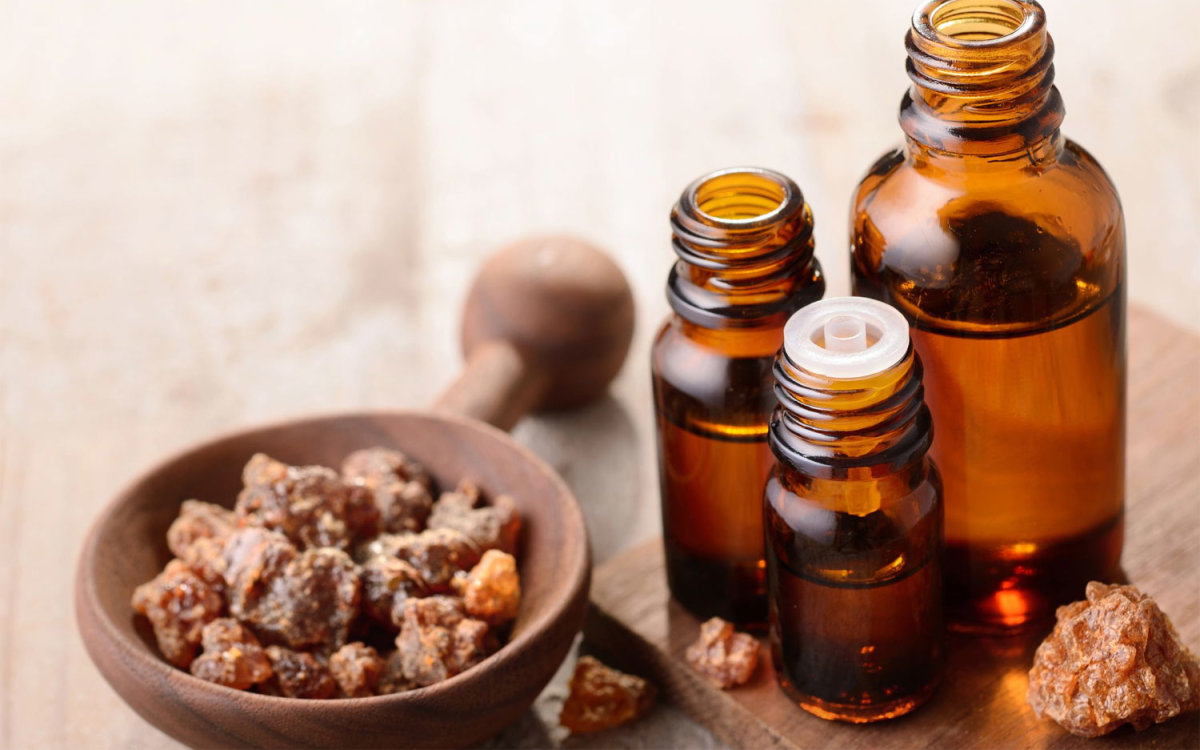
Of course, each drug can be both beneficial and harmful - especially if you use it uncontrollably and do not listen to your own feelings. However, according to the experiments of M. N. Kondrashova (doctor of biological sciences), an overdose of succinic acid is almost impossible - its excesses simply disintegrate into connecting elements, which does not affect the body. In addition, the product has a localized effect - only on damaged tissues, without accumulating in healthy ones. And this means that such a substance is one of the safest biologically active supplements. However, it does not hurt to consult a doctor!
Succinic acid - instructions for medical use
Succinate is sold in pharmacies in the form of white powder or tablets with a long shelf life - at least 3 years. For internal use, they are dissolved in 50-100 ml (about 4-8 tablespoons) of hot water, and then poured into food or diluted in cold drinks. If you react badly to acidic products, mix the product with baking soda in a 1:1 ratio - it will not affect its properties in any way.
How to calculate the required amount of succinic acid? First of all, check whether you have symptoms of its deficiency - rapid fatigue, weakness, malaise, slowed reaction, decreased immunity, sudden weight gain. If there are at least a couple of signs from the list - you are not getting a biologically active supplement from food and need an auxiliary dose. And it's easy to find out - multiply your body weight by 0.03. The result will be your individual norm in grams. Elderly people should take 0.3-0.5 g of the substance per day, and children - 0.05 g. The course should last from 3 to 10 days.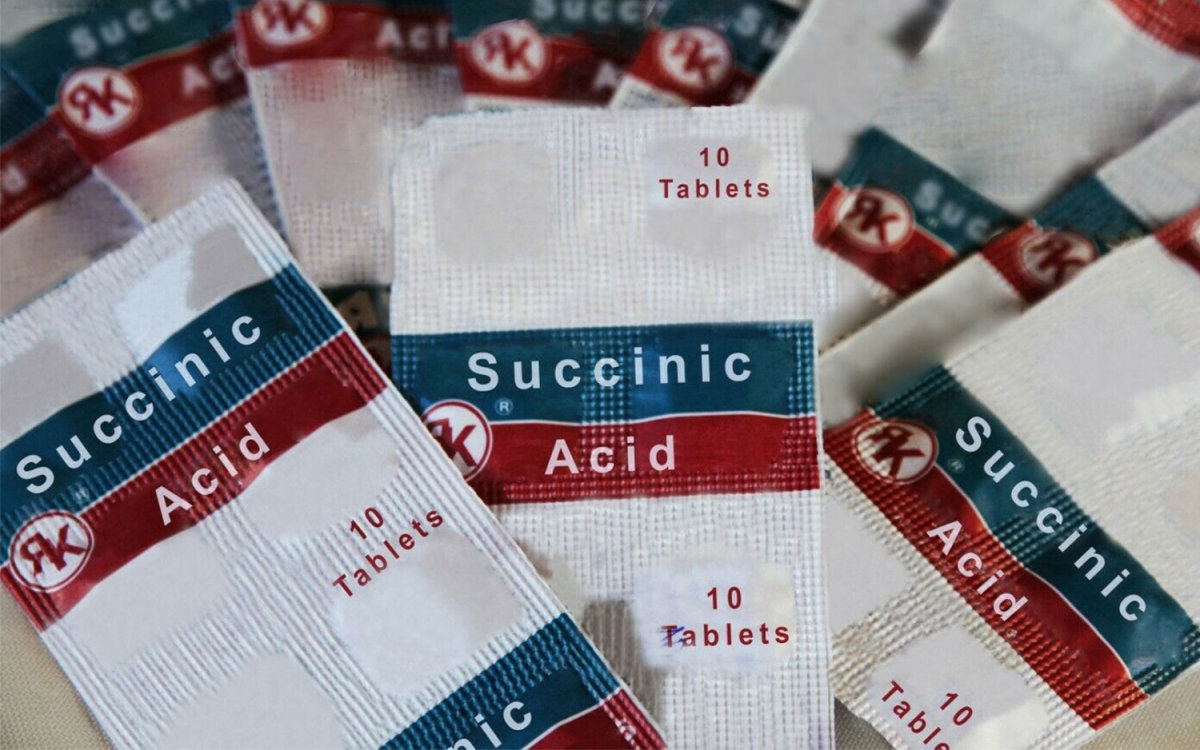
There are separate indications for the use of succinate in cases of certain ailments. So, for the prevention of colds in the autumn-winter period, they are used twice a day for 0.5 g for 2 weeks. And in the initial stages of SARS, one-time intake of an increased dose helps - up to 3 g. A saturated solution of the drug (2 g per 200 ml of water) will restore muscle tone after intensive sports and neutralize lactic acid. To improve appetite, you will need 0.25 g of succinic acid before meals. And to avoid alcohol poisoning, it is enough to drink 0.25-0.75 g of the product half an hour to an hour before the feast.
Useful and alcoholic tinctures on solar gems. 2.5 g of crushed cabochons are poured with 0.25 l of 96% ethanol or 300-400 ml of vodka, shaken and kept in a dark place for at least a month, as a result of which succinic acid is released from the precious stones and turns into a liquid state. This solution is drunk 3-5 drops per day for 2 weeks in order to increase the tone of the body, strengthen health, get rid of migraines and toothaches, jumps in blood pressure, menstrual cycle disorders. With a runny nose, sore throat, laryngitis, inflammation of the lungs and other diseases of the respiratory system, inhalations are made with it - 10-20 drops of tincture are mixed with essential oils of mint, eucalyptus and tea tree, then 0.5-1 liter of boiling water is added and the mixture is breathed for 10-15 minutes 2 times a day. And the drug is also excellent for compresses - gauze is soaked in it and applied to the thyroid gland to prevent any disorders in the production of hormones.
Beauty panacea - instructions for use
Succinate is one of the most powerful means in cosmetology. Both the purified substance and amber powder, crumb and whole gemstones are used. What's more, even accessories made of polished cabochons have a healing effect - for example, by regularly wearing such necklaces, you will never suffer from iodine deficiency, skin and hair problems!
Here are some recipes with this remedy:
- body scrub: crush gems and dilute in water or honey (in a ratio of 1:2), apply a thin layer and wait for complete drying (10-15 minutes). Then, gently massaging, wash off the remains with warm water and moisturize the cleaned areas with lotion;
- face mask: succinate is mixed with tonic or hydrolat (water extract from herbs or flowers) to the consistency of thick sour cream and covered with it on the skin (excluding the area around the eyes), wiping off after 15-20 minutes. Such procedures are carried out from 1 (if you have dry skin) to 3 times a week. The cream is prepared in a similar way, only your regular self-care product serves as the basis;
- adding the drug to the shampoo, you can forget about dandruff, hair loss, and split ends. The strands will become moisturized, shiny and obedient;
- there are numerous enthusiastic reviews about succinic acid, which heals pimples, acne, scars, scars, and stretch marks. Lotions from this substance are applied to the problem area and kept for 15-30 minutes (depending on the degree of damage). Wrinkles, pigment spots, edema and other defects will begin to disappear after 2-5 sessions;
- hand baths - dilute gem powder in warm water and immerse your hands in it for 10 minutes. Rough skin and calluses will soften, nails will stop flaking and become brighter.
Succinate in everyday life
Enumerating why succinic acid is needed as a biologically active additive, one cannot fail to mention that it is used in pharmaceuticals, the production of polymers, surfactants, dyes, flavorings, varnishes, and perfumes. Under the code E363, succinic acid is used in the food industry as a vitamin and acidity regulator. It is also indispensable in agriculture - it accelerates ripening, increases yield, ensures resistance of seedlings to droughts, cold, diseases and parasites.
And succinic acid is also very useful for plants: it literally revives dried roots, stabilizes the soil microflora, accelerates the absorption of fertilizers, prevents excessive accumulation of nitrogen and toxic substances, and stimulates survival during propagation by shoots. To do this, dilute 1 g of the product in 250 ml of water and water or spray the houseplant once every 2-3 weeks.
